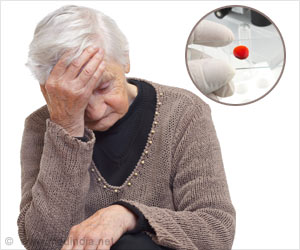“We know that people with disabilities were more socially isolated before the pandemic, so for a variety of reasons, the pandemic has amplified that disparity,” she said.
People with disabilities are often immunocompromised or have comorbidities that would cause more severe infection from COVID-19, requiring more strict isolation at home to avoid exposure to the virus.
The study, published in Rehabilitation Psychology, examined survey responses from 441 adults between October and December 2020 who self-identified as having a disability. In total, 61% of participants met the criteria for probable major depressive disorder and 50% for probable generalized anxiety disorder.
That’s much higher than the pre-pandemic baseline among people with and without disabilities, Bogart said. Previous research in the field has found that about 22% of people with disabilities are diagnosed with depression during their lifetime. According to the Anxiety & Depression Association of America, in an average year, roughly 7% of all U.S. adults have major depressive disorder and 3% have generalized anxiety disorder.
Stigma was also a major predictor for depression and anxiety, particularly from conversations and policies around medical rationing where disabled people were essentially deemed a low priority for life-saving COVID resources. This translated into greater fear of catching the virus and needing medical care that might not be available, and therefore more social isolation, Bogart said.
“Especially early on in the beginning of the pandemic, there were explicit policies in place that disabled people would not be given priority to receive a ventilator or to receive even COVID tests when those were scarce,” she said.
Medical practitioners were directed to focus resources on patients who were likely to have a “good quality of life” after COVID, but the health care system frequently underestimates the quality of life among disabled people, whether it be someone who uses a wheelchair or someone who has an intellectual disability, she said.
“Some of those policies thankfully got removed, though I think some are still in place,” Bogart said. “But even when those policies don’t exist, there are a lot of other more implicit ways that health care was difficult to access.”
For example, at different points during the pandemic, hospitals and health care centers have delayed or canceled all “non-essential” health care to limit transmission of COVID within their facilities. This means that disabled people cannot access their regularly scheduled health care, including physical therapy or surgery, which can exacerbate their conditions.
Despite the surge in mental health issues, Bogart sees some hope in the study’s findings: Social isolation and access to health care are points that can be addressed fairly easily, such as by connecting via Zoom and capitalizing on telehealth visits when possible. Several large disability organizations have been organizing virtual community events as well, which may be more accessible to some people than in-person events, depending on their disability.
“We know that social support is really beneficial; what’s interesting is perceived isolation or perceived social support is much more important than the actual concrete number of friends in your social network,” she said. “It’s all about whether someone perceives their support to be adequate.”
Home visits and in-home assistance are also crucial for making health care accessible and safe for people with disabilities when the practitioner needs to physically treat or examine them, Bogart said.
And within telehealth, Bogart said health care systems can improve accessibility by providing automatic captioning for people who are deaf or hard of hearing, providing sign language interpreters and making platforms that blind patients can navigate, as well.
Home visits and in-home assistance are also crucial for making health care accessible and safe for people with disabilities when the practitioner needs to physically treat or examine them, Bogart said.
And within telehealth, Bogart said health care systems can improve accessibility by providing automatic captioning for people who are deaf or hard of hearing, providing sign language interpreters and making platforms that blind patients can navigate, as well.
Source: Newswise



